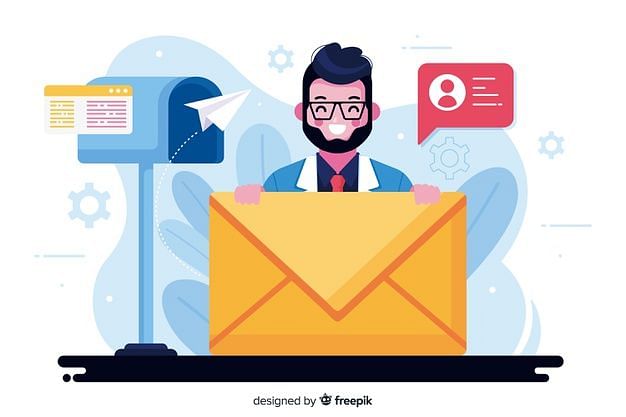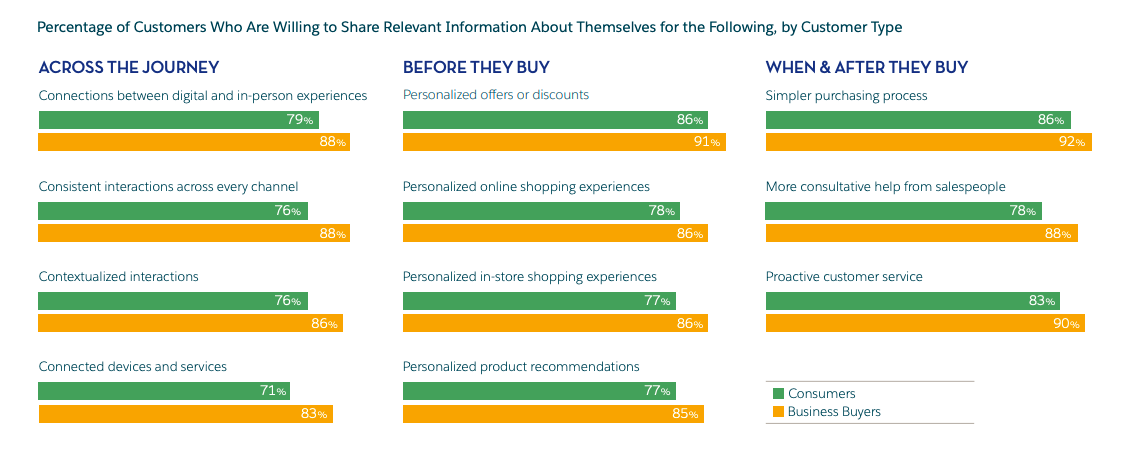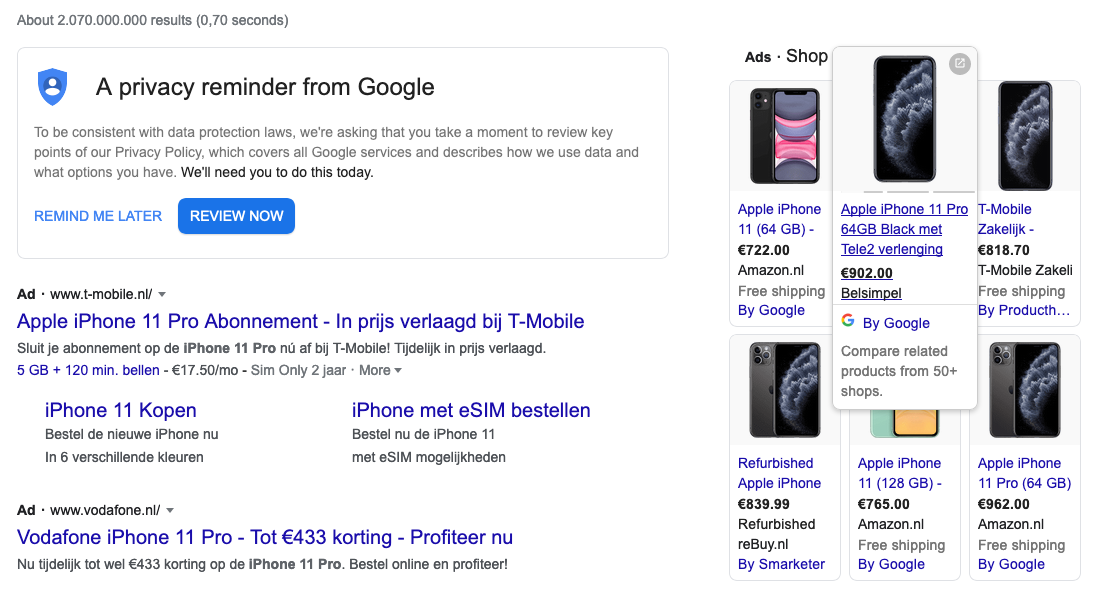Personalized email campaigns work much better than generic ones. That’s because they simply work for both sides—you and your prospective buyers.
One-to-one email campaigns can boost sales, maximize profitability, increase customer lifetime value and help you build a loyal customer base.
In this blog, you’ll learn
- What’s a personalized discount email
- Benefits of sending tailored price drop emails
- How to collect customer data for personalization
- How to use the data in creating personalized email campaigns
- When is a good time to offer discounts
You’ll also see how they help you offer competitive pricing, without sacrificing good profit margins. But before jumping into details, let’s understand what exactly personalized discount emails are.
Table of Contents
What is a Personalized Discount Email?
Email marketing personalization has more than one form. If we want to put out one definition, we can say that personalized emails involve some sort of dynamic content. This can be a headline that adapts to the shopper’s name, age, geographic location, etc, product recommendations that change according to a shopper’s personal preferences, and so on.
In our case, we approach personalization from a pricing perspective.

Personalized discount emails help you offer shoppers a discount in line with their expectations, on products they’ve shown interest in.
By meeting their expectations—about product recommendations and price—you’re drastically increasing their likelihood of buying your products.
Let’s take a closer look at its benefits.
Benefits of Personalized Discount Emails
Online sellers’ competitive mindset usually traps them into a cycle of improving sales performance each month. But that’s not going to guarantee you success.
We’re all familiar with the anxiety of survival in a fiercely competitive environment. But there are ways to differentiate yourself from the rest, regardless of your size or niche.
Sending a personalized discount email is one great way to stand out from the crowd, and it has incredible long-term benefits.
Let’s dive in!
1. Drastically increases likelihood of purchase
Shoppers’ expectations have skyrocketed in the past couple of years.
They want to be able to shop seamlessly, receive their packages in a few days—without a fee—, get excellent customer service and all at a fair price.
Personalizing their experience will be a leap forward in fulfilling their expectations.
I’m sure you get tons of discount emails each month and just open a bunch of them. But what if your usual electronics retailer sent you a discount code you can use on the blender you’ve been wanting lately? And what if after you use the discount, it’s exactly at a price that you’re willing to pay?
You’d probably jump into that deal, right? I know I would.
So in a sense, personalization helps you adopt a more customer-centric approach. By giving shoppers what they want, you’re drastically increasing their likelihood of buying from your store.
2. Maximizes profits from each segment
People’s willingness to pay for a product varies incredibly. When you set a price, you know that it won’t be attractive to everyone’s eyes. So you intentionally target a certain group of people with the price you set.
For instance, when you want to capture a large portion of the market—basically when you’re trying to get traction to your store—you go with a lower price. Whereas if you’re selling to high-end customers, you’re going with a higher price.
Ideally, you need to find a balance between maximizing profit margins and selling as much as you can.
Well, that’s where personalized discount emails come in.
Personalized discounts allow you to set a higher price, which’ll be attractive to high paying customers, then target price sensitive customers with more attractive deals.
Think of it this way.
Instead of charging everyone the same price, you’re setting an initial price that’s maximizing revenue. But at the same time, you’re minimizing the opportunity cost by targeting other segments at a price they can afford. Meaning, you’re making the most of each transaction from all segments.
3. Reduces the money you leave on the table
If you’ve been in this industry for a while, you know that e-commerce is all about small profit margins.
Online prices are transparent. So when a shopper wants to find the best deal, comparison shopping engines like Google Shopping yield the results in seconds. Since comparing prices is incredibly easy, it’s become an integral part of online shoppers’ buying journey.
Discounting is a great way to lure these price-conscious shoppers into buying your products, whereas blanket discounts seriously erode your profit margins.
Apart from that, store-wide steep discounting also hurts your profitability in the long run. Once you cut all your prices, implementing a price increase will cause you trouble.
Price increases are always a bit tricky since they create a negative feeling in shoppers’ minds. Especially if your customers get used to seeing steep generic discounts on your store.
Personalized discounts, on the other hand, will help you profit as much without angering them.
So who needs more encouragement? Give them that. But you don’t need to lower prices for everyone. That’s basically leaving too much money on the table.
4. Helps you get to know your customers better
Adobe’s ROI from marketing report found 40% of e-commerce revenue comes from repeat purchases.
Turning website visitors to conversions is quite difficult. The lack of trust is a barrier in getting them to buy from you for the first time.
But your existing customers trusted your store once already and they’re more likely to buy from you again.
Instead of putting all your efforts into customer acquisition, channel some into getting to know your existing customers better.
91% of shoppers say they’re likely to shop from stores that recognize them and provide relevant recommendations and offers. They need to know you’re listening to what they say. And you’re able and willing to understand their interests and needs. And sending them personalized discount emails will show them you’re capable of providing that.
5. Shoppers will feel more comfortable sharing personal data in the future
86% of shoppers say they’re willing to share relevant information in exchange for personalized discounts. When it comes to business buyers, the number jumps to 91%.

But why do you need even more customer data?
Agility is really important nowadays. You need to be able to carefully observe the changes in shopper behavior in these uncertain times and quickly adapt your decisions to the changes. And you should always keep in mind that the decisions you make today may lose relevance in a month, or in weeks.
For instance, studies say that a major trend awaiting retailers in the upcoming months—it’s already happening in some segments—is heightened price sensitivity among consumers.
Shoppers are expected to turn to cheaper alternatives for their everyday purchases, prefer economy packs and look for better value in affordable options.
Online sellers who are in close touch with customers and have data collection and analysis systems in work have a greater chance of survival in these uncertain times.
How to Send Personalized Discount Emails?
To send your customers relevant triggered emails, start collecting customer data:
- Products bought
- Amount of purchases
- Buying frequency
- Time of purchases
- Products added to their wishlists
- Product abandoned in online carts
- Products browsed
- Amount/percentage of discounts previously encouraged them.
There are many web analytics tools available for every budget. You can use website cookies, automate the process with built-in triggers, sync historical data from your own databases.
Your ESP, like SendX, should integrate with the analytics service you’re using. When you drop the price on your website or pricing software, your ESP sends out content tailored to your customers.
But how to know when to offer a discount?
Finding the Right Time to Offer Discounts
Your pricing strategy is crucial to your success and growth. You need to build a pricing system responsive to changing market conditions.
Without price intelligence, you risk setting an absurdly high or low initial price.
In the first case, your potential customers feel your prices are far from being fair. In the latter, most shoppers think your products are poor quality or counterfeit, as we tend to associate quality with price.
So when is the right time to offer discounts?
When competitors cut prices
Remember what we’ve talked about understanding your target market better? 87% of shoppers say knowing they get a good deal is important when deciding which retailer to buy from.
We’ve also mentioned how price comparison naturally became a part of our buying journey. But even shoppers who’ve never used a comparison shopping engine see reference prices everywhere.

Reference prices are a combination of outer price points we encounter throughout our lives and our perception of what would be a fair price for a product.
It’s like when you somehow know a board game shouldn’t cost you $1000.
Those reference prices influence how we perceive each price point we see. In other words, they shape our expectations.
Monitor your competitors because their prices are seen by your prospective buyers every day. When they cut prices, send personalized discounts tailored to your shoppers buying behavior.
Seasonal sales
Seasonal sales are a great way to encourage shoppers to buy more products than usual. Spending increases across different segments and there are tactics you can use to lure each segment to your store.
Personalized discounts are incredibly effective in catching someone’s attention during seasonal sales. Imagine this:
Let’s think of your customers as they’re in two categories for the sake of simplicity: ones that plan to spend money in the upcoming season, and ones that don’t.
Send discount codes to the first group they can use on products they’ve recently searched, ones that they abandoned in cart, and added in their wish lists. This strategy will work well because:
- Even though you don’t beat retail giants’ prices, you’re giving shoppers what they want. These shoppers will likely take your offer and return to your store in the future because you’ve shown them you’re being responsive to their needs.
- You can create bundles that’ll encourage shoppers to increase their basket size.
One way to capture these shoppers’ attention early on is to schedule these emails several days earlier than your competitors’ campaigns start.
When it comes to the second group of shoppers, sending personalized emails can encourage them to spend more time browsing your pages, and perhaps make unplanned purchases.
As part of your loyalty program
Loyalty programs work better when personalized. You use personalized reward programs to stir up some demand when there’s no seasonal event going on.
With the customer data at hand, you can:
- Create several loyalty programs tailored to each group with different spending habits. By making it easy for them to qualify for the reward, you’re giving them an extra reason to shop from you.
- Offer several ways in which they can use their rewards. This will entice them to turn to your store for more.
While 87% of shoppers are open to brands tracking their activity if it results in more personalized rewards, only 22% of loyalty program members are happy with the level of personalization they receive.
That means providing them with the right type of rewards can set you apart from your competitors.
One thing you can do to increase engagement is to include individuals’ current status in the loyalty program, to encourage them to pursue it further.
Making the Most Out of Sending Personalized Discount Emails
Personalized discount emails help you boost sales, build a strong relationship with your customers and avoid losses that come with generic steep discounts.
It’s the type of personalization that we all want in our lives. Who’d not want to get a discount tailored to their needs and spending habits, right?
So it’s only natural that shoppers are far more likely to share personal data if there’s a personalized experience awaiting them.
To be able to give shoppers what they want in the future, give them what they want today and keep on collecting data.
FAQs
1) What are personalized emails?
Personalized emails involve some sort of dynamic content, such as a headline that adapts to the shopper’s name, age, geographic location, etc, product recommendations that change according to a shopper’s personal preferences, and so on.
2) How do personalized discount emails help?
Personalized discount emails help you offer shoppers a discount in line with their expectations, on products they’ve shown interest in. By meeting their expectations about product recommendations and price, you’re drastically increasing their likelihood of them buying your products.
3) How should I go about sending personalized discount emails?
In order to send your customers relevant personalized discount emails, you need to first collect customer data, like products bought, amount of purchases, buying frequency, time of purchases, etc. Then set it up using an ESP like SendX that integrates with the analytics service that you are using such that when you drop the price on your website or pricing software, your ESP sends out content tailored to your customers.
4) When is the right time to offer personalized discounts?
Here are some examples of times when you can offer personalized discounts:
- When competitors cut their prices
- During seasonal sales
- As a part of your loyalty program.